

 PYL 105
PYL 105






 PYL 105
PYL 105




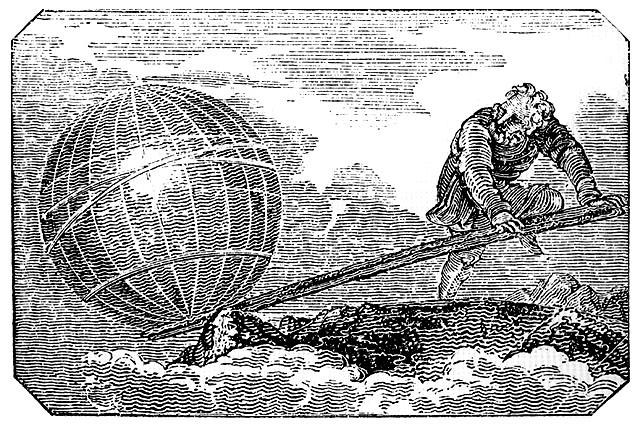
It is easier to open a heavy door when you know where the hinges are. Then you know to apply your force at the opposite end of the door. You also know to push perpendicular to the door's surface. What you are doing here is (for the given force) maximixing your torque.
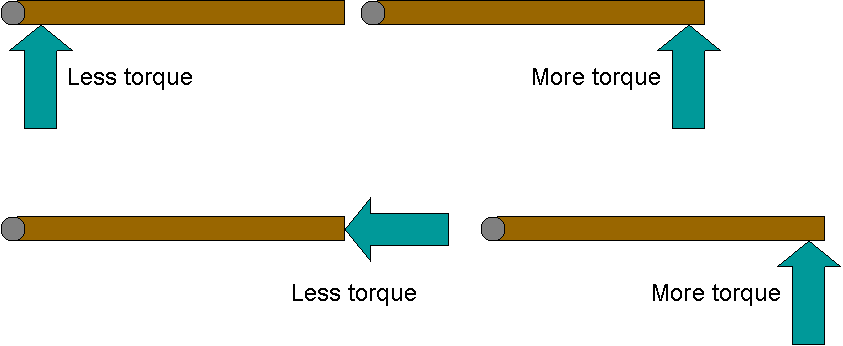
The important factors in determining torque are
Just as the net force must be zero in order for there to be no acceleration, the net torque must be zero in order for there to be no angular acceleration (rotation). Thus no net torque is another condition for static equilibrium.
Part 1
Set up a lever-type system. Recall the following definitions regarding levers.
Fulcrum: the point about which a lever rotates – if the lever is moving this is the point that remains stationary
Lever arm: the (perpendicular) distance between the point where a force (a.k.a. an effort) acts on a lever and the fulcrum
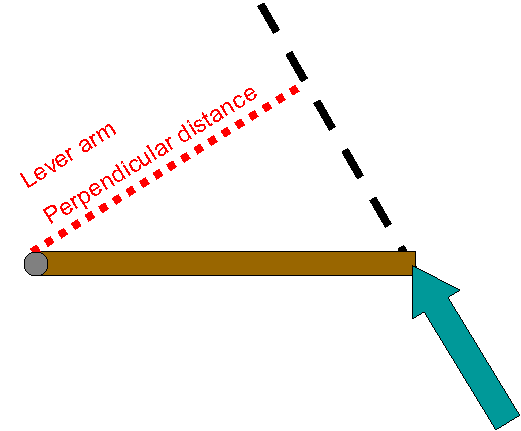
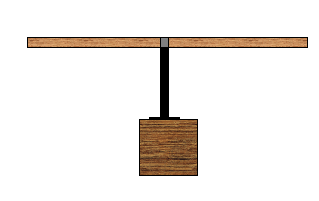
| Mstick ( ) | x CM,stick ( ) |
| Mbracket ( ) |
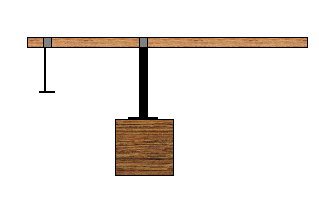
| Pivot Position ( ) |
Hanger Position ( ) |
| RCM,stick ( ) |
Mstick ( ) |
Rhang ( ) |
Mhang (Incl. bracket) ( ) |
Clockwise Torques ( ) |
Counter- clockwise Torques ( ) |
Total Torque ( ) |
| The positions in this table are all mesaured from the same end of the stick. | ||
| Pivot Position ( ) |
Hanger 1 Position ( ) |
Hanger 2 Position ( ) |
| The R's in this table are all mesaured from the pivot point. | ||||||||
| RCM,stick ( ) |
Mstick ( ) |
Rhang,1 ( ) |
Mhang,1 (Incl. bracket) ( ) |
Rhang,2 ( ) |
Mhang,2 (Incl. bracket) ( ) |
Clockwise Torques ( ) |
Counter- clockwise Torques ( ) |
Total Torque ( ) |
We have been treating all of the mass of the meterstick as acting at one point: its center of mass. From this point of view the weight of the stick leads to just one torque which might be clockwise or counter-clockwise. But part of the stick is to the right of the axis and should cause a clockwise torque, while the rest of the stick is to the left and should cause a counter-clockwise torque. Let us re-analyze the data from the part with one hanger from this new point of view.
| Rstick,right ( ) |
Mstick,right ( ) |
Rstick,left ( ) |
Mstick,left ( ) |
Rhang ( ) |
Mhang (Incl. bracket) ( ) |
Clockwise Torques ( ) |
Counter- clockwise Torques ( ) |
Total Torque ( ) |
Part 2: The boom
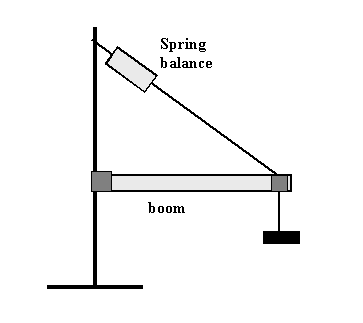
| Rboom ( ) | Mboom ( ) | Rhang ( ) | Mhang ( ) | Tension ( ) |
RTension ( ) |
Angle |
| Clockwise Torque ( ) |
Counter- clockwise Torque ( ) |
Net Torque ( ) |
| Rboom ( ) |
Mboom ( ) |
Rhang,1 ( ) |
Mhang,1 ( ) |
Rhang,2 ( ) |
Mhang,2 ( ) |
Tension ( ) |
RTension ( ) |
Angle |
| Clockwise Torque ( ) |
Counter- clockwise Torque ( ) |
Net Torque ( ) |
Part 3: The ladder calculation (SKIP THIS LAST PART -- LAB IS TOO FAR AHEAD OF LECTURE FOR THIS)
Include as part of your lab, the calculations outlined in torques.doc.
